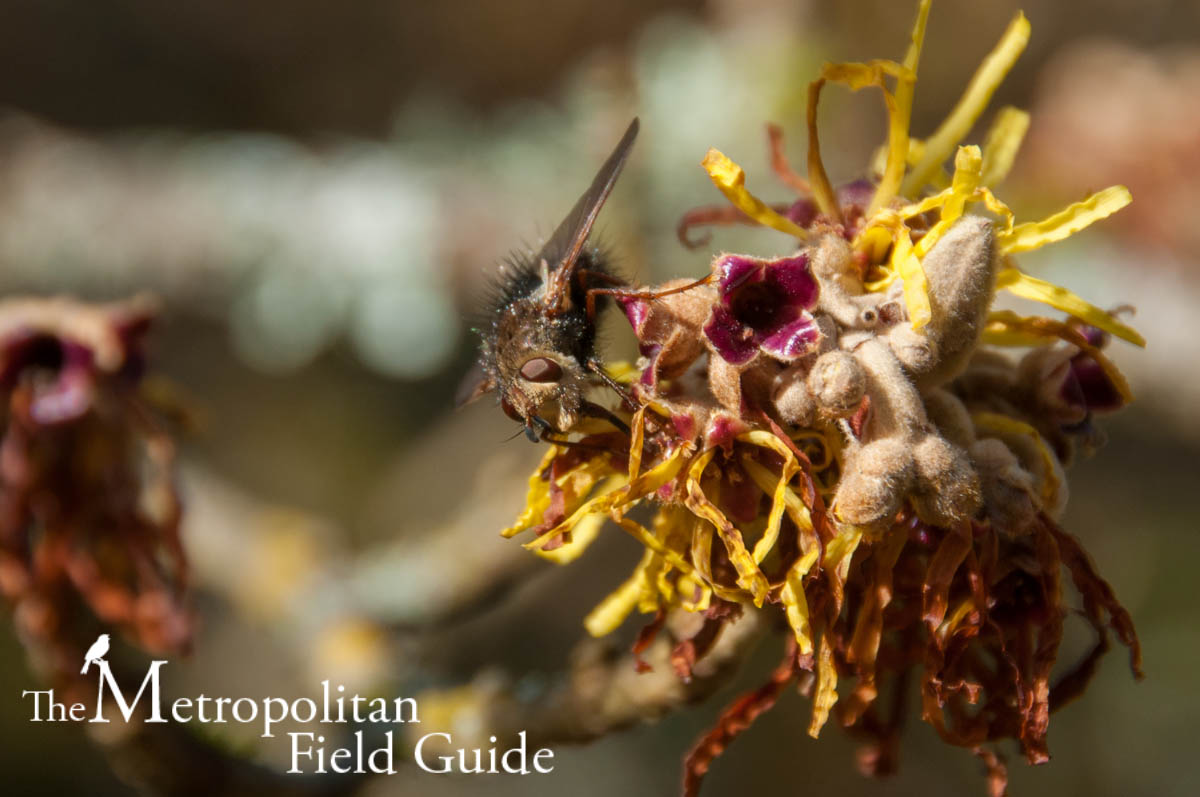This was originally published on Native Plants & Wildlife Gardens.
In North America hummingbirds pollinate, in the southwest bats pollinate, but most of all, insects pollinate. By far the most popular garden pollinators are hummingbirds and butterflies, but there are many other beautiful (in a less traditional way) pollinators including flies, bees, moths and beetles.
Many pollinators visit flowers for the nectar, such as butterflies, ants and honeybees, however many insects, including bumble bees and lady beetles, visit for the pollen, which they consume. Many plants have evolved different shapes and colors of flowers to attract certain types of pollinators. There’s a great episode about flowering plants in the wonderful David Attenborough show The Private Life of Plants, and you can see a clip of that episode here.
Pollinator Flowers
Hummingbird flowers have evolved into tubular shapes so that the bird, with their long bills, can reach the nectar. They are also often in colors that attract hummingbirds, but not other pollinators, such as red, a color that bees do not see. The flower’s structure is also altered to exclude other pollinators and as such many have petals that curve back as well as barrier of stigmas and stamens which stops all but the long bill of the hummingbird.
Additionally, these flowers have no ‘landing platform’ which many flowers suited for bees and butterflies do have. Likewise, many hummingbird flowers lack a scent because birds have no sense of smell, another reason bees, moths and butterflies ignore these flowers. Interestingly though, some plants that evolved on continents without hummingbirds such as Chinese lantern and lion’s tail have been successful at attracting hummingbirds despite the flower not evolving along-side the birds.
Butterfly flowers are typically composite flowers, which are tiny, tubular flowers surrounded by petals, much like daisies. This form also provides somewhere for them to land since unlike hummingbirds, butterflies typically remain stationary to feed. There is even some evidence that suggests that larger butterflies prefer larger, taller flowers.
The preference of bees varies among species. Some bees prefer flowers with a simple structure and easily accessible nectar while others, such as the bumble bee, often prefer more complex flowers because they possess longer tongues. Often times the flower will have ultraviolet markings that direct the bees like a landing strip to the nectar and pollen.
Unlike hummingbirds, butterflies and moths, flies have very small mouthparts and prefer flowers that are very small and shallow. Beetles also prefer smaller flowers, but they prefer them to have someplace to perch.
It’s important to understand the structure of flower that each pollinator prefers. to select the best plants for a landscape. Many cultivated flowers often lose these benefits because they may have little nectar inside as a result of being cultivated. Other cultivated varieties of native flowers may produce double-flowers that are modified from the original species and as a result make it difficult or even impossible for the various pollinators to access the nectar.
It’s also important to realize that there are very few extreme specialist plants or pollinators because it is so risky for either party. Many pollinators are generalists, meaning they can forage from a wide-range of flower species. Indeed, most pollinators and flowers alike require a diversity of the other to survive. However, many do have preferences and the best way to find out which flowers specific moths, bees or beetles prefer is to do a little research.
There is a great deal still unknown, but more and more information is becoming available all of the time. Organizations such as the Xerces Society or the North American Butterfly Association are good resources. Also try your local extension services for information about pollinators and plants.
Design Tips
- Provide a continuous flowering succession by mixing annuals and perennials and choosing plants for the different blooming periods, spring, summer and fall. Many annuals bloom for longer periods than perennials and a mixture of the two will provide a constantly changing garden during the growing season.
- Provide adequate early foraging supply for pollinators such as bees that emerge early and produce multiple generations during one year.
- Plant a diversity of flowers. As few as eight different species grouped together can significantly increase the abundance of bees attracted. A diversity of plants also helps a site resist disease and pests more effectively.
- Overlap different types so that as one dies out, the next will cover the dead flowers with new blooms.
- Plant flowers in masses, it will attract butterflies who are attracted to large groupings of blooms.
- Plant structurally, include low blooming plants and tall blooming plants.
- Include night-blooming flowers to entice the nocturnal pollinators such as moths and beetles.
- Plant flowers native to your specific region. Research by Gordon Frankie found that native plants are four times more likely to attract native bees to them.
- Plant garden herbs, such as basil, rosemary and lavender, which provide good nectar sources for pollinators, but also provide yourself with herbs to use.
- Include insectary plants, plants which attract other beneficial insects which parasitize or prey on pests.






